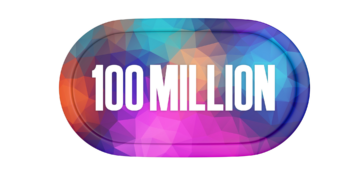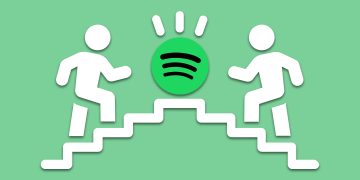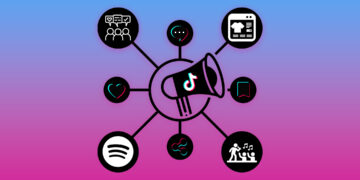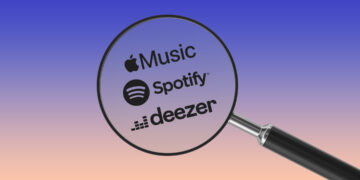How do consumers listen to music?
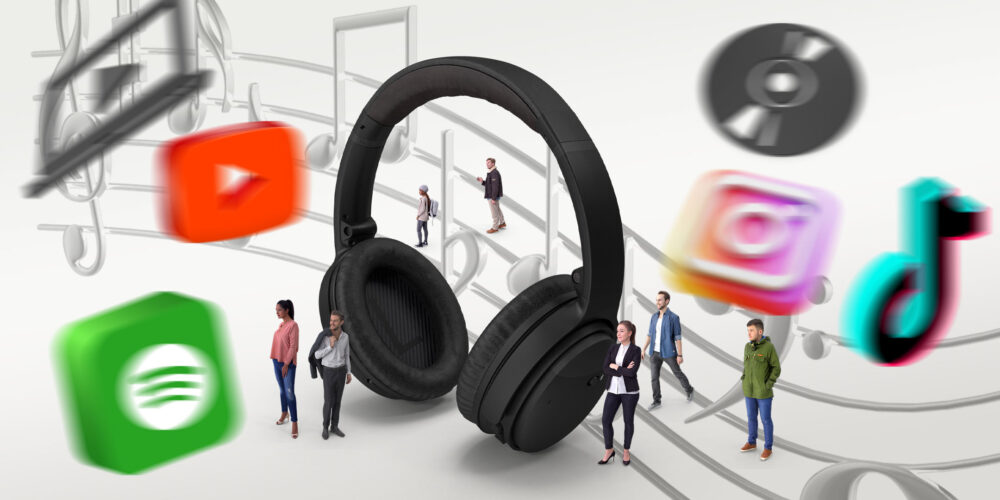
- How long consumers listen to music and via which formats
- How many consume livestreaming, radio, and even physical audio formats
- Why the streaming boom has not eliminated piracy entirely
A study commissioned by IFPI surveyed 43,000 people in 21 countries on how they consume music. “Engaging with Music”, according to their own reports, is worldwide the biggest music-oriented consumer study to date. The biggest conclusion to draw from it is that consumers listen to an average of 18.4 hours of music per week. In the last study, conducted in 2019, it was only 18 hours. Assuming that the average song is 3 minutes long, this number is equivalent to 368 songs per week.
But where is this music played? Weekly music consumption is divided as follows:
| Format | Worldwide |
|---|---|
| Premium streaming | 23% |
| Free streaming | 9% |
| Video streaming (e.g., YouTube, DailyMotion) | 22% |
| Short-form video apps (e.g., TikTok, Triller) | 11% |
| Social media platforms (e.g., Facebook, Instagram) | 3% |
| Radio | 16% |
| Purchased music (downloads, CDs, vinyl) | 9% |
| Live (including livestreaming) | 2% |
| Other | 5% |
Streaming
A total of 78% of respondents said that they use streaming services. Out of those that choose to do without streaming, 35% said that they don’t need streaming services because they can find all the music they need on free video platforms.
The survey also shows that listeners don’t just consume whatever the algorithm sets in front of them.
- 68% reported looking for a specific song more than once per week (16-24-year-olds: 82%)
- 62% reported looking for a specific artist more than once per week (16-24-year-olds: 73%)
- 62% reported listening to a self-compiled playlist more than once per week 16-24-year-olds: 78%)
Livestreaming / radio
29% of survey participants said that they watched a livestream concert. 65% will continue to consume livestreams even when live concerts are back. 55% view livestreams as a good alternative for when they are unable to attend a concert.
As the analysis shows, radio remains a medium that should not be underestimated. 74% said that they turn on their radio mainly for the music and 66% stated that they would not listen to radio if it weren’t for the music. In the 35-64 age range, 81% listen to the radio, among 25-34-year-olds, the number is still as high as 76%, and even when it comes to 16-24-year-olds, radio can count on two thirds of the demographic to listen in.
Physical audio formats
The study additionally shows that physical products have not entirely disappeared. 12% of respondents have purchased a CD in the last month and 8% have bought a vinyl. For both formats, 25-34-year-olds rank above average with 15% purchasing CDs and 11% vinyl. Vinyl consumers are particularly passionate music fans. 81% of them use streaming services and 67% reported discovering new music or new artists every week. They also listen to 22.1 hours of music per week on average, which is 20% more than the average respondent.
Stream ripping
But of course, it’s not all sunshine and rainbows. 30% of survey participants admitted to consuming music illegally. This is especially common among 16-24-year-olds, where the number reaches 38%. The most popular practice is stream ripping, which is used by 27% of respondents and 35% of 16-24-year-olds. This, unfortunately, shows that the streaming boom has not yet fully eradicated piracy.
Fun and joy
No matter how the music is consumed, almost everyone agrees that music is simply good for the mind. 80% of survey participants stated that music helped their mental health during the pandemic. Among 16-19-year-olds it is 85%. 87% actually said that music gave them fun and joy during COVID. Let’s hope that this joy leads to more streaming subscriptions, merch purchases, and concert viewership.


